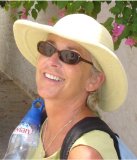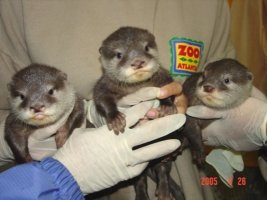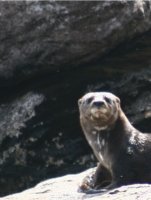 |
Last Update:
Thursday November 22, 2018
|
| [Home] |
Work on creating the Otters in Captivity Task Force was begun in earnest in 2007 after OSG chair Jim Conroy reiterated Claus Reuther’s earlier request that the OSG look at how we could best interface with our colleagues working with otters in captive settings. I am pleased to report that this task force, known as OCT, has made some valuable progress in establishing our goals, identifying objectives, meeting some targets, and solidifying positive working relationships with otter professionals worldwide. The OCT identified promoting worldwide communication between individuals working with otters in captivity and all other settings as the group’s mission (Appendix B). The goal of our mission is to reinforce or create strong lines of communication and cooperation between all professionals working with otter species. To accomplish this we established several objectives and have begun work in several target areas. MEMBERSHIP Because facilitating communication, cooperation, research, and quality care is central to the OCT our objective is to create a truly international working group. At this time the core task force consists of eleven members representing zoos and conservation organizations from the U.S., Europe, and Australia. The OCT has an impressive international group of professionals serving as advisors, sub-group chairs, and sub-group members. We would like to include additional zoo representatives from South and Central America, Mexico, Asia, and Africa. The OCT also is looking for any field biologists interested in assisting with our mission. If you have zoo contacts or are interested in promoting quality care of captive otters and cooperative research please contact Jan Reed-Smith at lontracat@live.com. Appendix A lists OCT members, advisors, and subgroups. COMMUNICATION As a result of OCT outreach efforts the first broad-based international captive survey is being conducted on diets fed Asian small-clawed otters. This project was developed and coordinated by Jackie Moody and others at the Marwell Zoo (England) to survey EAZA (European Association of Zoos and Aquaria) member facilities, but with the assistance of OCT it was expanded to include ARAZPA (Australasian Regional Association of Zoos and Aquaria), and AZA (Association of Zoos and Aquariums) institutions. This international effort should contribute greatly to our understanding of nutritional issues associated with this species in captive settings. The international and regional studbook keepers for this species are both members of the OCT and we look forward to working with them to facilitate future international efforts they undertake. WORKING SUB-GROUPS The core OCT group identified a gap in the availability of quality husbandry knowledge, particularly easily accessible short documents that contain information on critical elements of captive care for each species. Because we did not want to duplicate work done by the many excellent professional zoo and aquarium organizations we first contacted these groups to obtain existing husbandry documents. Next we established small working groups tasked with creating short, 10 to 15 page documents covering critical issues, which are easier to share and translate into range country languages. The first of these, Asian small-clawed otter has been completed. One of our advisors, Scott Roberton who works in East Asia has volunteered to find translators for this document. We greatly appreciate Scott’s help with this and ask anyone who may be able to help with translation to contact the OCT. At this time we have sub-groups working on giant, North American, Eurasian, and African spotted-necked otter documents targeted for completion in early 2009. Additionally we have the veterinary group led by Heike Weber, nutrition group led by Katrin Ruff, and a rehabilitation group consisting of three professionals known for their success at releasing orphaned otters back to the wild. The documents produced by the veterinary and nutrition groups will cover general information applicable to all otter species and be available on the Otter Specialist Group website along with the species care documents. The rehabilitation document will not be posted on the website but will be made available to OSG members and qualified professionals by contacting lontracat@live.com. THE FUTURE We have several ideas we are working on for the future. These include creating a short document covering the basics of husbandry training. This will focus on training animals to willingly enter crates for weighing or movement to veterinary facilities eliminating stress on the animals and staff. Additionally, we are exploring creative ways we can interface with the world’s zoo organizations to promote cooperative research and the banking of tissue/blood samples for genetic work, etc. Other areas we are exploring are the creation of an online database of photos illustrating what good otter enclosures should look like, healthy captive otters, enrichment ideas, denning boxes, etc., and coordinating an international otter keeper workshop at the next International Otter Colloquium. As communication is a key element of the OCT we invite all otter researchers to consider revitalizing the research database created several years ago by the OSG. This would provide us an excellent source of information to share with our captive institutional partners who may be interested in supporting field research and allow us to monitor ongoing projects that may match with captive institutions’ conservation targets. In the latter case the OCT can then notify the researcher of potential funding opportunities they can pursue. Finally, we will continue adding to the library of husbandry and captive care resources already placed on the OSG website (Library – Captive Task Force). For this effort I would like to thank Lesley Wright for her dedication and invaluable help. In closing I encourage anyone interested in the work of the OCT to please contact me. APPENDIX A: COMPOSITION OF THE OCT Members Advisors Sub-groups Asian small-clawed otter - Carol Heap, Chestnut Centre; Lesley Wright, OSG; Lindell Andrews, ARAZPA, ASC regional studbook keeper and species coordinator; Sarah Duncan, AZA, ASC International studbook keeper Giant otter - Sheila Sykes-Gatz , Dortmund Zoo N.A. river otter - Meredith Owens, North Carolina Aquarium @ Pine Knoll Shores; Scott Shelley, Columbus Zoo and Aquarium; Victor Alm, Oakland Zoo; Brian Helton, Sedgwick County Zoo Nutrition - Katrin Ruff , PhD; Mike Maslanka, MS; Geraldine Nicasio, PhD Health Care - Heike Weber, DVM; George Kollias, DVM, PhD; Helénè Jacques, DVM; Gustavo González, DVM; Christine Osmann, DVM, Astrid Günther-Weigl, DVM Rehabilitation Group - Grace Yoxon, IOSF; Melanie Haire, Zoo Atlanta; Tanya Thibodeaux, ARC Animal Rehabilitation
OCT Mission Statement: For captive biologists: For field biologists: For additional information please contact: Jan Reed-Smith, Chair: lontracat@live.com Résumé:Groupe Loutre
de l’UICN/SSC : Groupe de travail sur les loutres captives
(OCT) Resumen:UICN/CSE
Grupo de Especialistas en Nutria de Río: Grupo de Trabajo
para la Nutria de Río en Cautiverio (OCT por sus siglas en
ingles)- En Soporte de la Calidad del Cuidado en
Cautiverio de la Nutria de Rio en el Mundo |
| [Copyright © 2006 - 2050 IUCN/SSC OSG] | [Home] | [Contact Us] |


